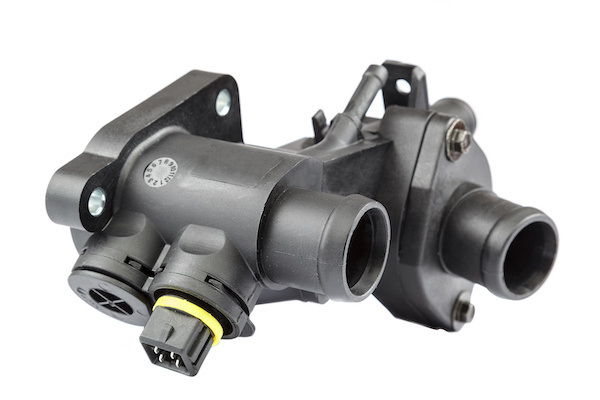
A safe and smooth driving experience depends upon a well-functioning vehicle. There are numerous components housed in a car's engine that are crucial for its proper operation. One of these vital elements is a thermostat, which enables the car engine to work at an optimum temperature by regulating the flow of coolant.
Thermostat- a small yet effective device
A thermostat is a small device that is positioned in between the car engine and radiator. It consists of a wax-filled cylinder, two valves-main and by-pass, and a spring. Car engines need an optimal temperature range, which is 194°F or 90°C, to function effectively. The valves function to maintain this temperature by allowing or blocking the passage of coolant. The valves are shut tight to restrict the movement of the coolant when the engine starts. As soon as the engine warms up, the valves open wide, allowing the coolant to dissipate the retained heat in the radiator.
How does a Thermostat work in the Car's Cooling System
An overheated engine is hazardous to the well-being of the car as well as the driver. It is a fire hazard that can lead to irremediable damage to the car engine. A thermostat ensures that the car's cooling system is functioning efficiently and prevents the engine from getting too hot.
As the engine is started, it takes a few minutes to warm up, and during that time, the coolant is cold. The primary valve of the thermostat remains closed, but the by-pass valve is opened, keeping the coolant circulating in the engine. As the engine gradually reaches optimal functioning temperature, the coolant starts to heat up. Once this heated coolant comes in contact with the wax-filled cylinder, it causes the wax to melt and expand. This expansion results in opening the primary valve, passing through which the coolant reaches the radiator and cools down, becoming ready to recirculate the engine again. Once the temperature drops, the spring returns the main valve to its closed position.
What Can Go Wrong?
The thermostat plays a balancing role in keeping the engine at the optimum temperature. Anything that disrupts this balance of opening and closing of the thermostat valves can result in symptoms that indicate the need for proper servicing, replacement, or maintenance of the thermostat. These signs can occur if:
- Engine shows temperature variations frequently.
- Engine overheats within moments of starting the car.
- It takes a greater amount of time to warm up the engine.
- Poor fuel economy
- Reduced engine power
- Leaking coolant
If you notice any of these symptoms, it means that your car needs thermostat repair. We invite you to bring your vehicle into our auto repair shop today!